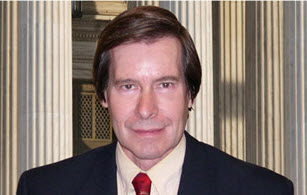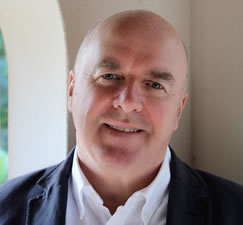In the last 10 years, the 9th U.S. Circuit Court of Appeals has decided two cases involving naked licensing: Barcamerica International v. Tyfield Importers (9th Cir. 2002) 289 F.3d 589, and Freecyclesunnyvale v. The Freecycle Network (9th Cir. 2010) 626 F.3d 509. Most lawyers regard naked licensing as a rarity, likely to involve non-profit organizations (as Freecycle did) or very small companies. But naked licenses are not always the product of amateurs. Naked licenses can and do occur between sophisticated parties after lengthy and detailed negotiations involving experienced counsel.
Another misconception about naked licensing is that it cannot occur when the licensee sells a high-quality service or product. Strictly speaking, naked licensing is not about the quality of the licensee's product, it is about whether the licensor exercises quality control. A high-quality licensed product with no licensor quality control is naked licensing. But a mediocre-quality licensed product with licensor control is not. "Whether Renaissance's wine was objectively 'good' or 'bad' is simply irrelevant. What matters is that Barcamerica played no meaningful role in holding the wine to a standard of quality - good, bad, or otherwise." Barcamerica at 597-8.
The finding of a naked license -will result in loss of the trademark - a devastating consequence. So how do sophisticated parties with experienced counsel avoid creating a naked license? Consider this hypothetical:
In a licensing negotiation, each side has certain issues that it considers to be paramount. Thus they are willing to forgo other points to achieve these paramount points. The definition of "licensed goods," the territory, the royalties and the approval process are examples of paramount issues. Here, the licensor wants a strict and steep royalty payment schedule. The licensee realizes that, due to the balance of power, it must live with the royalty provisions, but it wants product design and manufacturing to flow unfettered by delays in licensor approvals. The licensee agrees to the royalty provisions in exchange for the licensor promises that products not approved in 10 days will be deemed automatically approved unless the licensor issues a written rejection.
The licensor is satisfied, it has the royalty provisions it wants and the right to approve and disapprove products. The licensor also feels secure because it has done some investigation of the licensee's current products and quality is very good. The licensee is satisfied because it has a very flexible approval process and now has the added market power of a strong mark.
The parties, however, have difficulty negotiating other issues such as the definition of "licensed goods" - what the licensee can and cannot produce. The negotiations drag on several months and almost break down. Finally, the definition of goods is resolved. Both sides achieve their most important goals after a lengthy and difficult negotiation. The license is signed, the deal done.
The licensor and licensee get along famously. At first, the licensor attends a few initial line showings of the products. These are social events with casual comments, with no record of product changes required by the licensor. Quality is good and sales are strong. Royalties flow like wine. The licensee promptly and cooperatively responds to every licensor request. The licensor sporadically attends product showings and never issues written approvals or disapprovals.
Five years later, there is a large-scale infringement that harms the licensee's business. The licensor and licensee cooperate and file suit against the infringer. The infringer issues a request for production of all written approvals and disapprovals. In response, it receives no documents because there are none. The infringer takes the deposition of the person most knowledgeable about product approvals, employed by the licensor. She testifies that she never went to any licensee line showings and the person who did is no longer employed. She further testifies that she regularly saw licensed products and the quality was very good, but she is not aware of any records of approval or disapproval of products. She cannot recall ever disapproving a particular product. She testifies she never approved any licensee products and was not asked to do so, although she saw many of the licensee's products and liked them all.
The infringer moves for summary judgment on the grounds that there is no infringement because the trademark has been abandoned due to a naked license. The licensor and licensee oppose and support their opposition with declarations about the high quality of the licensed products, including a very low rate of returns at retail.
The infringer's moving papers point out that it has followed the two stage analysis required in the 9th Circuit. First, the license allows automatic product approval; it does not require approval by the licensor. Second, the conduct of the parties also establishes that there were no quality controls implemented by the licensor through approval and disapproval of products.
There is a good chance that the infringer would win the motion for summary judgment because of the absence of proof of quality control by the licensor. Not only is the case lost - and significant attorney fees down the drain - but the licensor may find its entire trademark licensing program in jeopardy because of a public finding of the naked license and the consequent trademark abandonment. At the very least, the licensor would have to disclose to potential licensees both the finding of a naked license and that it may not have the ability to protect against infringements.
It is not only the licensor who faces a loss, the licensee now knows that it cannot stop the infringers who are cannibalizing its market. It too has incurred fees and lost executive time in the lawsuit. Ironically, the licensee's goal of freedom from a restrictive approval process has now come back to bite it with a vengeance.
During the negotiations, the parties lost the forest for the trees by focusing on their respective key issues; they lost sight of the need for a license with quality control provisions. This was compounded by what is normally seen as a blessing, a great relationship between the licensor and licensee, which allowed informality to eliminate documentation of approvals.
It is worth spending a few minutes, even after a tough and lengthy license negotiation, to make sure that the license has clear quality control provisions that may not be sidestepped by an automatic approval process. Once a license is signed, it is prudent to remind the client, whether it is a licensor or licensee, that it is in its best interest to make sure quality control provisions are followed. While the quality control process is a burden, it is also a shield that protects both the licensor and the licensee.
Mr. Sarabia has become intimately familiar with the many business problems - and legal issues - which fashion companies may face. The start of his apparel industry experience was nine remarkable years as part of the senior management of Guess?, Inc. Guess? went through amazing growth during this period, one year alone its sales grew 400%! In these nine years, Guess? transformed from a fad into a mainstay fashion company. Those who were fortunate enough to work there saw a variety of challenges, problems and issues which most apparel companies do not encounter over decades.
©Copyright - All Rights Reserved
DO NOT REPRODUCE WITHOUT WRITTEN PERMISSION BY AUTHOR.











